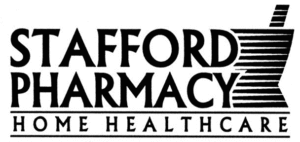Sterile Preparations
HOME PARENTERAL THERAPY PROGRAM (HPTP)
We are proud to be a partner in the Lethbridge Home Parenteral Therapy Program which offers patients access to their intravenous antibiotic therapy at home rather than hospital. The decision to move this therapy home, into the community rather than in the hospital is made by those responsible for the patient’s treatment regimen. Community care is not limited so much by the length of treatment or antibiotic regimen but more so the patient’s willingness and ability to participate in their care and sometimes the nature of the infection. For most patients, home antibiotic therapy can continue at home with little disruption. The treatment comes in the form of antibiotic delivered by constant infusion, gravity feed or by daily injection. Our role is the preparation of the various dosage intravenous dosage forms in a sterile (aseptic) environment according to Alberta College of Pharmacy and NAPRA standards.
Pump Infusion
When provided by infusion, the pharmacy prepares the infusion by loading intravenous (IV) bags of either Normal Saline (0.9% Sodium Chloride) or Dextrose 5% in Water (D5W), which are the diluting solutions, with the daily dose of antibiotic. Patients receiving this form of the antibiotic will generally have a PIC line or occasionally some type of ‘mainline’ which offers a quick connection for the intravenous bag loaded with antibiotic. Rather than the nurse starting a new intravenous each day, these temporary connections are inserted surgically and thereby offer a safe connection to a catheter that delivers the medication intravenously. Then its just a matter of disconnecting the empty bag and connecting the new bag. A programmable pump looks after pumping the selected antibiotic dose two to four times daily automatically as well as maintaining a minimum flow of fluid to maintain the status of the vein being used. The pharmacy will provide a week supply of antibiotic iv bags, which would represent seven bags per week since one bag is supplying 24 hours of antibiotic therapy.
The size of the intravenous bag (100ml, 250ml, 500ml) is dependent on the antibiotic and the dose. The antibiotic could be Penicillin G, Cloxacillin, Clindamycin, Cefazolin, or Ceftriaxone for example. The antibiotic used is that which is usually started in hospital by the physician led team, often in consultation with an infectious disease (ID) specialist in Calgary or Edmonton. Of course, blood work is done to determine the nature of the infection and also the comparative sensitivity of the infection to the antibiotics available. Consideration must also be given to the patient’s allergies to antibiotics which may require that the antibiotic chosen is changed to one that is both effective and not at risk of causing you an allergic reaction.
Gravity Feed
Where the antibiotic dose is a simple once daily dose, the intravenous dose can be delivered as a simple once daily infusion. The antibiotic mixed in normal saline or dextrose 5%, is infused using gravity to feed the solution intravenously. Instead of the 24 hour infusion, this type of infusion makes use of gravity to draw the solution from the intravenous bag and into the vein, which is again connected by a catheter that remains in the vein for the two, four or six weeks required for the antibiotic treatment. When using a gravity feed the volume of solution is much smaller than the 24 hour infusion. Volumes are as small as 50ml but are usually no larger than 100ml. Just how long this once daily infusion takes is dependent on that volume of solution. In general, the gravity feed (infusion) takes between 10min and 20min.
Mini-Bag Plus
When the antibiotic dose represents the full contents of a commercially available antibiotic such as Invanz® (ertapenem), the pharmacy may chose to use a ‘Mini-Bag Plus” system. The mini-bag plus system represents a small volume of diluting solution, which again could be normal saline or dextrose 5%, connected to a large plastic spike which pierces the antibiotic vial but does not allow the solution to mix with the antibiotic until the connecting spike is broken by simply bending the portion of the spike that extends out of the vial and connects to the small volume IV bag. Once the connecting tube is firmly bent until the internal valve “snaps” open, then the solution only has to be kneaded enough to force the solution into the vial, mixed and allowed to flow back into the bag to be mixed well with the 50ml or 100ml of solution usually used. Video demonstrating the Mini Bag Plus (Note: this link will take you to a YouTube video)
Intra-Muscular Injection or IV ‘Push’
There are occasions when an infusion or even a small volume gravity feed delivery is just not practical. In those cases the antibiotic dose will be reconstituted in the vial, drawn up and injected intra-muscularly, sometimes with a local anesthetic to make the injection less uncomfortable. This is the most practical when the antibiotic regimen is short and/or the patient does not have a PIC line available. When there is vein access setup then this same reconstituted vial dose can be given as an IV Push which means the dose is injected into the available IV port followed by normal saline to flush out the vein. Depending on the type of port, some additional maintenance such as a flush with heparin may be necessary to ensure the port remains open.


